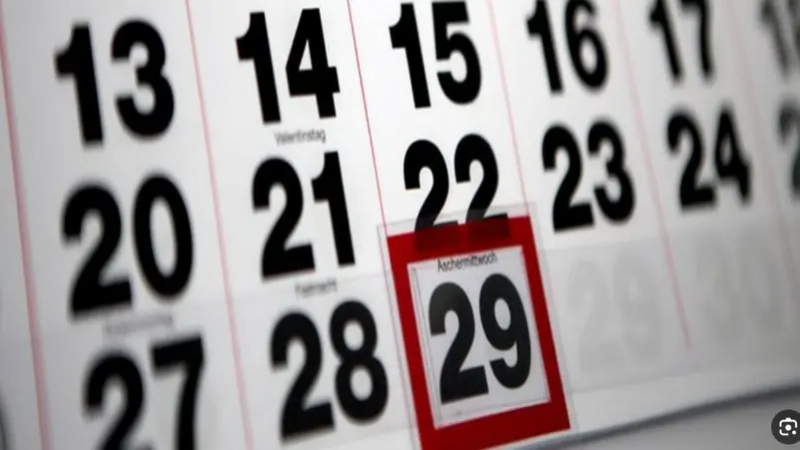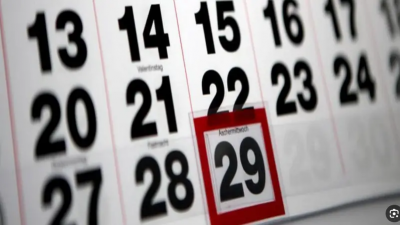February 29 is a rare occurrence as it only comes once every four years, making it a unique day that isn’t celebrated annually. Individuals born on this day are considered among the unluckiest due to the fact their birthdays only happen every four years. Leap years contain 366 calendar days instead of the usual 365 and occur every four years in the Gregorian calendar, which is currently used by most countries worldwide. The extra day, known as Leap Day, is February 29, and it is absent in non-leap years. In simpler terms, any year that can be divided by four is a leap year, such as 2020 and 2024, with some exceptions for centennial years or those ending in 00, like the year 1900.
The specialized science news site "Live Science" published a detailed report explaining the reasons behind and the history of "leap years." The report notes that other non-Western calendars, such as the Islamic, Hebrew, Chinese, and Ethiopian calendars, also have their versions of leap years, but they do not all occur every four years and often take place in different years than those in the Gregorian calendar. Some calendars even feature multiple leap days or even shortened leap months.
In addition to leap years and leap days, the Gregorian (Western) calendar also includes a few leap seconds, which have been added sporadically to certain years, the last being in 2012, 2015, and 2016. However, the International Bureau of Weights and Measures (IBWM), the organization responsible for global time regulation, will eliminate leap seconds starting in 2035.
The "Live Science" report emphasizes that leap years are crucial; without them, our years would look entirely different over time. Leap years exist because the single year in the Gregorian calendar is slightly shorter than the solar or tropical year, which is the amount of time it takes for Earth to orbit the sun completely. The calendar year lasts 365 days exactly, but the solar year is approximately 365.24 days, or 365 days, 5 hours, 48 minutes, and 56 seconds.
If we fail to consider this difference, each passing year will create a gap between the beginning of the calendar year and the solar year that will widen by 5 hours, 48 minutes, and 56 seconds each year, ultimately altering the timing of the seasons. For instance, if we stopped using leap years, after about 700 years, summer in the Northern Hemisphere would begin in December instead of June.
Adding leap days every fourth year significantly alleviates this issue, as the extra day is approximately equivalent to the accumulated difference over that period. Nonetheless, this system is not perfect, and we gain about 44 additional minutes every four years—equating to one day every 129 years. To resolve this issue, we skip leap years every centennial year, except those divisible by 400, such as 1600 and 2000. Even then, there is still a slight difference between calendar years and solar years, which is why the IBWM has also experimented with leap seconds.
However, generally, leap years mean that the Gregorian (Western) calendar stays synchronized with our journey around the sun. The concept of leap years dates back to 45 B.C. when the ancient Roman Emperor Julius Caesar created the Julian calendar, which consisted of 365 days divided into 12 months that we still use in the Gregorian calendar.
For centuries, the Julian calendar seemed to work perfectly, but by the mid-16th century, astronomers noticed that the seasons started about 10 days earlier than expected when significant holidays, like Easter, no longer aligned with certain events like the spring equinox.
To rectify this issue, Pope Gregory XIII introduced the Gregorian calendar in 1582, which is similar to the Julian calendar but excludes leap years for most centennial years. For several centuries, the Gregorian calendar was used only by Catholic countries like Italy and Spain; however, it was eventually adopted by Protestant countries as well, such as Great Britain in 1752, when their years began to deviate significantly from Catholic countries. Due to the discrepancy between the calendars, countries that later converted to the Gregorian calendar had to skip days to synchronize with the rest of the world. For instance, when Britain switched calendars in 1752, September 2 was followed by September 14, according to the Royal Observatory Greenwich.
The "Live Science" report concludes that, at some point in the distant future, humanity will need to reevaluate the Gregorian calendar as it does not align with solar years, but this will take thousands of years to occur.




